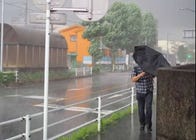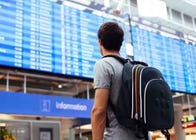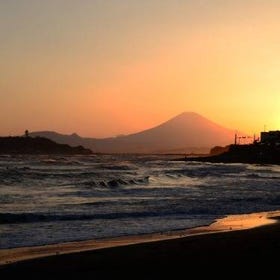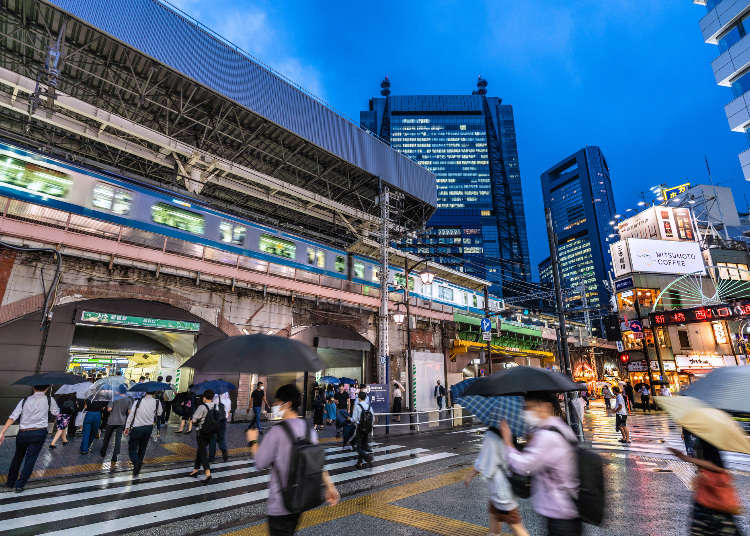
A significant number of typhoons hit Japan every year between summer and autumn. Particularly for those unaccustomed to these storms, experiencing one for the first time in a foreign country can naturally result in panic.
Here, we will provide insight into essential typhoon weather information, including what to do if you encounter one, and how to prepare if one makes landfall during your trip.
We also offer recommended alternatives in the event of unexpected plan changes, including tours and other indoor activities. As long as you arm yourself with proper knowledge and advanced preparations, there will be nothing to fear on your trip!
Top Image PIXTA
- Table of Contents
-
- Basic information: What is a typhoon?
- When do typhoons occur in Japan?
- What is the Typhoon Forecast for 2023?
- What to do if a typhoon occurs suddenly during your trip
- If your flight is delayed or canceled
- What to do if a disaster occurs while traveling
- How to enjoy your stay, even in bad weather
- My plans changed, now what? Recommended tours and activities with same-day booking
Basic information: What is a typhoon?
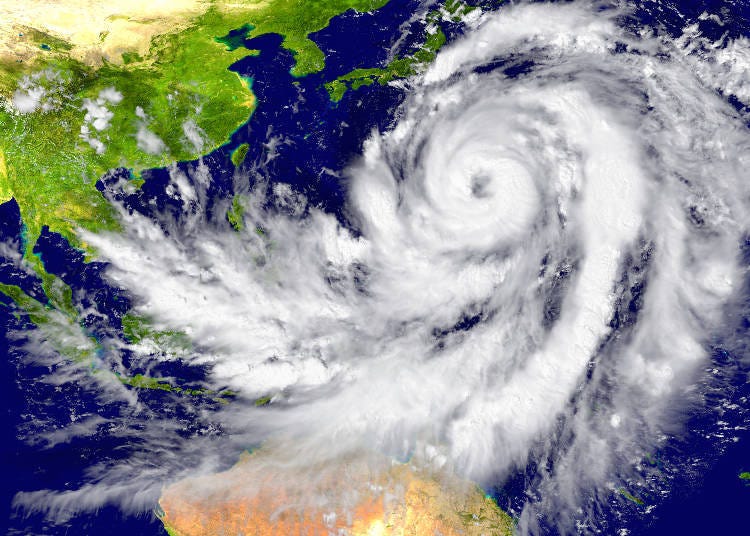
A tropical cyclone has the potential to bring substantial rainfall. Among them, a typhoon is defined as one originating in the Northwest Pacific Ocean or the South China Sea with a maximum wind speed (10-min average) of around 17 meters per second or more. Under international agreement, a tropical cyclone is considered a typhoon when its maximum wind speed (one-minute average) is 33 meters per second or higher.
Other tropical storms that occur around the world are called "cyclones" (Indian Ocean and South Pacific) and "hurricanes" (Pacific Ocean and Atlantic Ocean, east of 180 degrees north of the equator), depending on where they occur.
When do typhoons occur in Japan?
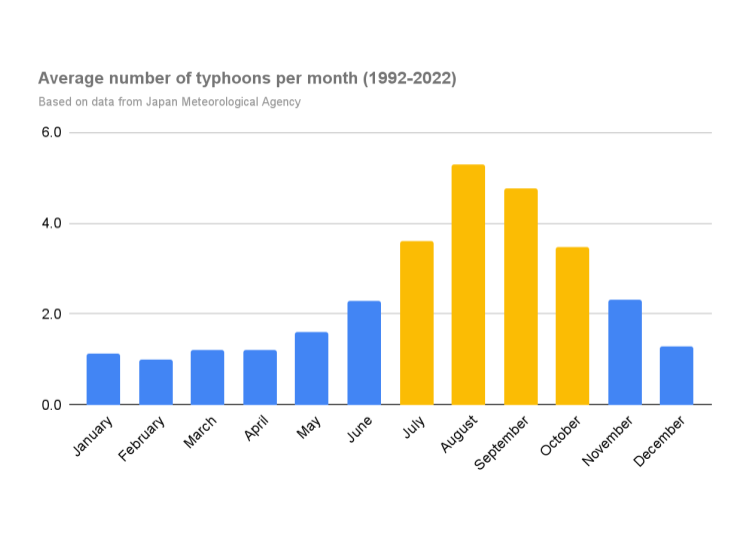
In Japan, according to Japan Meteorological Agency data, typhoon outbreaks are most common between July and October, with a greater frequency between August and September. They are most likely to approach the Japanese archipelago in the summer season due to high sea temperatures.
According to data from the Japan Meteorological Agency, the monthly average of approaching typhoons over the last 31 years (1991-2022) reveals a pattern of 3.6 occurrences in July, 5.3 in August, 4.8 in September, and 3.5 in October.
With around three per month, this translates to a frequency of one close approach every 1-2 weeks during peak typhoon season.
In addition, the Okinawa, Kyushu, and Shikoku areas are particularly prone to typhoons approaching and making landfall.
Travelers intending to visit these areas between August and September are advised to begin actively checking the weather forecast about a week prior to their planned departure.
Furthermore, autumn typhoons tend to be fast with substantial rainfall, warranting heightened caution. Recent irregular weather patterns have led to increased sea temperatures, contributing to the development of larger typhoons with a potential for significant damage.
Where do typhoons typically impact Japan?
A typhoon is classified as having made landfall in Japan when its center reaches the coastline of Hokkaido, Honshu, Shikoku, or Kyushu.
Heavy rains often affect the Pacific Ocean side of the above-mentioned regions, which can prompt the suspension of the Tokaido Shinkansen and result in flight cancellations as well.
Typhoons are influenced by various factors, including the presence of other concurrently forming typhoons, the Pacific High, and prevailing westerly winds. As a result, their movements can be complex, such as slow movement with sudden shifts between northward and southward directions.
Before visiting Japan, be sure to actively check any weather updates so that you can make any necessary disaster preparations and familiarize yourself with evacuation protocols.
What is the Typhoon Forecast for 2023?
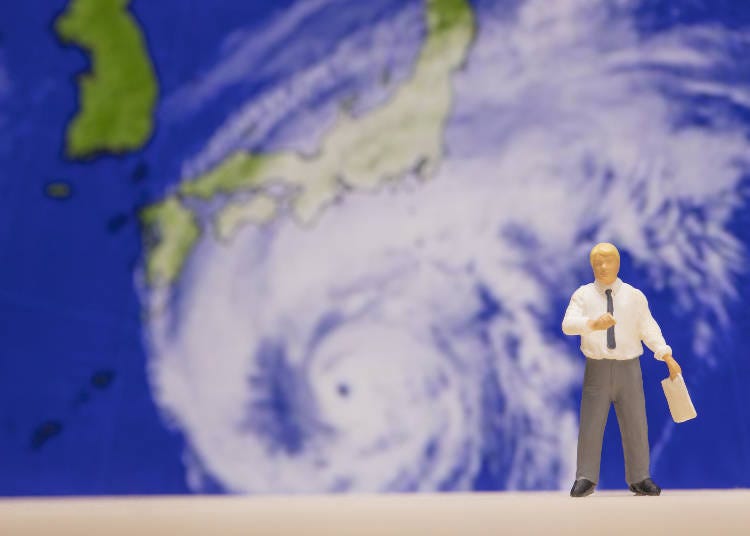
According to Weathernews, the anticipated typhoon count for 2023 is projected at around 29, which is slightly higher than average due to increased convective activity in typhoon-prone areas as compared to other years.
The forecasted trajectory of these storms is expected to increase the risk of approach and landfall, primarily along the Pacific side, spanning the southern to eastern parts of the country. Powerful typhoons are also more likely to manifest higher intensities, thereby requiring utmost caution.
What to do if a typhoon occurs suddenly during your trip
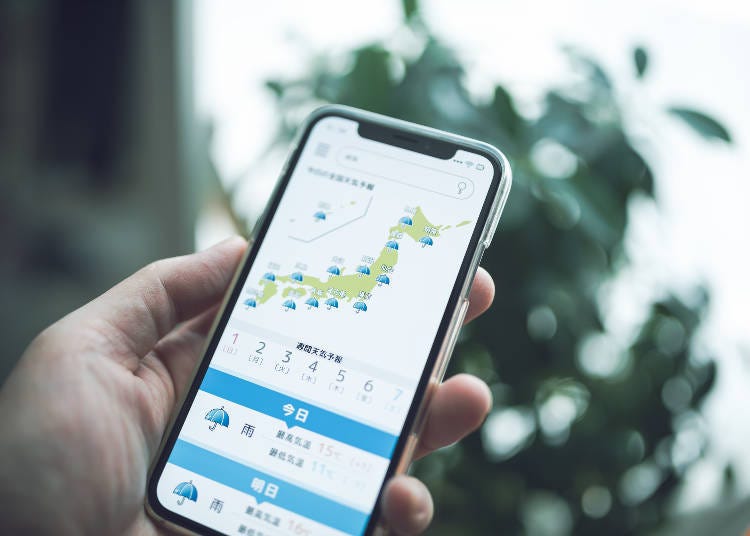
1. Ensure personal safety and stay informed with typhoon weather updates
Typhoons often bring in heavy rains and storms, increasing the risk of harm from airborne or falling debris, as well as stranding due to flooded streets, submerged roads, or inundated structures. To mitigate these risks, avoiding any unnecessary outdoor activities is highly advised.
When a typhoon approaches, rivers and ponds may experience sudden increases in water levels, as well as beaches, which may draw in high waves, so be sure to avoid these bodies of water. As the typhoon's approach progresses, rain and wind intensity tend to escalate simultaneously. If evacuation is advised, it is important to do so during daylight hours promptly and proactively.
Storms can also often lead to train delays and stoppages, potentially preventing you from returning to your accommodation. Therefore, if you know a typhoon is approaching, staying updated on traffic information is critical.
Don't assume you're safe simply because the typhoon's current location is far from yours. Sometimes, warm and humid air continues to flow in from the typhoon's surroundings, resulting in heavy rain. Even after it has passed, it's important to stay vigilant and continue monitoring the weather. Depending on the typhoon's path, it can experience a significant change in intensity.
Below are some multilingual websites you can refer to should a typhoon approach or make landfall.
- Japan National Tourism Organization (JNTO) Twitter
Maintained by JNTO. Provides updates and safety tips to international visitors in the event of a natural disaster.
https://twitter.com/JapanSafeTravel - NHK World News
Provides general news and weather information in multiple languages.
https://www3.nhk.or.jp/nhkworld/ - WeatherJapan
A free multilingual weather forecast application for foreign visitors to Japan, provided by the Japan Weather Association and Sorakaze. Provides various weather information.
iOS
Android
2. Check and adjust your travel itinerary as necessary
Next, carefully review your travel itinerary. If you have an upcoming flight scheduled, it's essential to check the flight status, whether domestic or international. In anticipation of poor weather conditions, whether due to a typhoon or anything else, you may want to consider canceling your flight well in advance of your departure.
Because flight delays and cancellations are typically determined by the situation at the time, it may be impossible to know anything for sure in advance. But the sooner you know, the better prepared you'll be to make necessary adjustments, including modifying your transportation or accommodation plans as necessary.
If you plan to use the Shinkansen or limited express trains, it’s also important to check their operation status. Even if the typhoon does not appear to have any impact on your current location, there is a chance it may approach or hit your destination. It is essential to stay on top of the operation status of any trains you may take in accordance with your travel itinerary.
Below are some useful websites that you can refer to.
- Flight Information: Narita International Airport Official Web Site
- Flight Information: Haneda Airport International Terminal
- Flight Information: New Chitose Airport Terminal
- Flight Information: Kansai International Airport
- Flight Information: Sendai International Airport
- Flight Information: Naha Airport
3. Prepare what you need
Depending on your current location, there's a possibility that you could face mobility restrictions in the aftermath of a typhoon, potentially leaving you stranded.
On top of that, other disasters, such as floods or landslides, may disrupt essential services like electricity, rendering ATMs inaccessible. It's advisable to prepare enough Japanese yen in advance (enough to last for about a week should suffice), just in case such a scenario occurs.
You'll also want to ensure your cellphone battery is fully charged in the event of a power outage. If the power goes out and your battery dies, it's important to know where and how you'll be able to recharge it. Places like convenience stores, internet cafes, and electronics shops may provide phone charging services during emergencies.
If your flight is delayed or canceled
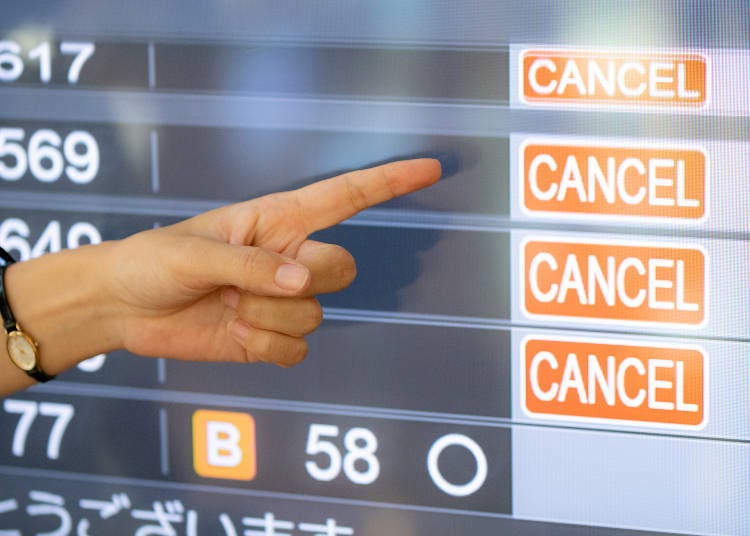
If you experience flight delays of cancellations due to a typhoon, please follow the steps below.
1. Check for flight modifications and refunds
Flights that are delayed or canceled due to acts of nature, such as typhoons and other weather conditions, as well as those rerouted through other companies, may be processed free of charge.
The same applies to tickets that cannot be canceled or modified. But remember, as airline counters are likely to be flooded with others attempting to complete the same procedures, it’s a good idea to do this online or over the phone.
However, be aware that with some LCC tickets, while you will be able to cancel your ticket, you might not be able to modify your flight or get a full refund, even in the event of a disaster. Therefore, it is advisable to check the company’s website in advance to confirm what disaster protection they offer, if any, when making your reservation.
2. Obtain proof of delay or cancelation of flight
Some airlines issue a certificate of proof when a flight is canceled or delayed over 30 minutes. If you need a certificate, please consult with your airline. Some companies may offer this service online as well.
3. Make accommodation arrangements
If you cannot return home due to a canceled flight, your travel agent or airline company may be able to make temporary arrangements for you, so be sure to consult with them if needed. However, do keep in mind that you will be responsible for the cost.
4. Check for flight delay compensation
Certain travel insurance policies and credit card plans may offer coverage for costs incurred due to flight delays or cancellations. To find out if you're eligible, check with your insurance or credit card company.
To file an insurance claim, be sure to keep the certificate of flight delay or cancellation, as well as any receipts of expenses incurred for lodging, food, and beverage.
What to do if a disaster occurs while traveling
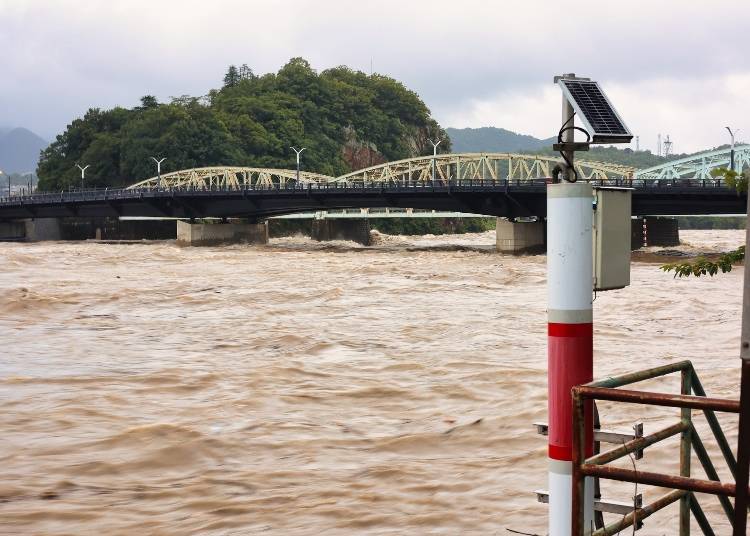
1. Understand current disaster information
If you encounter a disaster, including flooding and landslides, your priority should be your safety. Streams and ditches swollen by rain can have deceptive edges, which may lead to falls. Landslides are also more likely in this situation.
As a typhoon intensifies and transforms into a storm, strong winds can send objects flying or even blow you away. The force of the wind may even trap your hand in a door. Because of these risks, it is highly advisable to avoid all unnecessary outings.
Also, if you are staying near the seaside, be sure to avoid the coast, as waves tend to rise even before the typhoon's arrival and may remain turbulent even after it has passed.
LIVE JAPAN has compiled a list of resources with essential information for emergencies and disasters. You can also check the official information various transportation agencies provide on their respective websites.
The following websites and apps provide useful information on disasters as well as current, up-to-date disaster information (all available in multiple languages). We recommend checking out which sites and apps have what information in advance.
- Japan Meteorological Agency Disaster Information Website
Check out the latest information on weather, earthquakes, and other disasters, courtesy of the Japan Meteorological Agency.
https://www.jma.go.jp/jma/index.html - Safety Tips: A Disaster Information App
Safety Tips is a disaster information app courtesy of the Japan Tourism Agency. It provides push notifications to foreign visitors in Japan with special weather alerts, evacuation advisories, advance earthquake warnings, tsunami alerts, and more.
The app is available in 14 languages including English, Chinese (simplified and traditional), Korean, and Spanish. A website version is also available (English, Korean, and simplified/traditional Chinese).
iOS
Android
Website - JNTO Japan Official Travel App
For information on the JNTO website, please refer to: Plan your trip > Essential Information > Japan Visitor Hotline > Japan Safe Travel Information.
JNTO's official smartphone app, Japan Official Travel App, also provides disaster updates and information, including advanced earthquake warnings and special weather alerts. (Available in English, Korean, simplified/traditional Chinese)
Website
iOS
Android - JNTO Tourist Information Center
JNTO provides 24-hour telephone support in English, Chinese, Korean, and Japanese.
TEL: 03-3201-3331
Hours: 9:00 a.m. - 5:00 p.m. (Closed January 1) - Japan Visitor Hotline
In the event of a disaster, accident, or emergency, visitors can request tourist information and assistance. Available in English, Chinese and Korean.
From Japan: 050-3816-2787
From Overseas: +81-50-3816-2787
Available 24/7/365 - Others
Please also refer to the JMA's guide to useful apps and websites for use in times of disaster. Available in 15 languages, including English, Chinese (simplified and traditional), Korean, Spanish, Vietnamese, Thai, and Indonesian.
https://www.bousai.go.jp/kokusai/web/index.html
Information on evacuation centers and more can also be found on the Ministry of Land, Infrastructure, Transport and Tourism website. Here you will find informational sites for each respective prefecture with easy, at-a-glance language and other information.
https://www.mlit.go.jp/river/bousai/olympic/en/helpful03/index.html
2. Notify family members of your safety
When major disasters like typhoons or earthquakes strike, telephones and Internet lines often become congested due to the high volume of calls from loved ones seeking safety confirmation.
To address this issue, Japanese communication companies offer the following tools for ensuring safety confirmation.
- Disaster Message Dial (171)
Communications companies often provide ways to avoid communication congestion during disasters in order to quickly confirm the safety of your loved ones. By calling "171", you can leave messages for (and play messages from) the phone number of the person you wish to notify of your safety (or to confirm theirs).
Almost any line can be used for outgoing calls, including land lines, cell phones, public phones, and IP phones, allowing even foreign visitors in Japan to utilize this service. All you need is to have the phone number of the person you wish to contact on hand. Messages can be recorded and replayed from anywhere in Japan, although not from overseas. - Disaster Message Board Web171
If you can use the Internet over a disaster unified SSID (Set Service Identifier) such as 00000JAPAN (“Five Zero Japan), you can leave a message on the message board using your PC or smartphone, as well as check the message board from overseas. Messages must be 100 characters or less, and the service is free of charge.
In addition, although the URLs are separated by service provider, when searching, all other companies are included. Therefore, regardless of which one you register with, you can still search from among the URLs of other communication companies. The site is also available in English, Chinese, and Korean. - Disaster Message Board
This service allows you to post your safety information on a Disaster Message Board in the event of a major disaster, as well as view safety information online (including through other carriers’ mobile devices). This service is only available in the event of a large-scale disaster, such as earthquakes of magnitude 6 or above. The service is provided by Softbank, NTT DoCoMo, KDDI (au), amongst others.
(During non-disaster times, only the automatic e-mail feature is available.) This service can be used by those who have rented a smartphone during their stay in Japan. While there are packet communication charges, no usage fees apply. This service is also usable from overseas as long as you have an internet connection.
iOS
Android
*The above links to the Disaster Message Board service provided by SoftBank. - Google Person Finder
If you have access to the Internet, you can also use Google Person Finder, a service provided by Google to register and verify safety information. This service allows anyone to post or access safety-related details directly through the website, with no need to create an account or download an app.
To share safety information, enter the name of the person whose safety you wish to report. To verify safety information, click on "Looking for someone," and enter their name. If their information has been logged, their safety status will be displayed.
However, be aware that this service is accessible by anyone, exercise caution about disclosing personal information. While you can use your real name, refrain from sharing your exact address (general area is fine). You can also upload photos of your belongings or clothing instead of your face. The service is available overseas, as well.
https://google.org/personfinder/japan?lang=en
How to enjoy your stay, even in bad weather

If your trip is marred by persistent bad weather, changes in plan may be necessary. Fortunately, Japan offers numerous indoor facilities where you can still have a good time. For the time being, let the typhoon take its course, and consider making alternative plans for indoor fun instead.
However, if a typhoon is approaching, making landfall, or poses any safety concerns, please refrain from going out anywhere at all, and remain at your accommodation. If you are unable to travel very far, you can always go shopping at a nearby supermarkets or convenience stores when it’s safe to do so.
Below are a few indoor recommendations that promise enjoyment, regardless of inclement weather.
Recommended spots for a rainy day in Tokyo

Maxell Aqua Park Shinagawa is a cutting-edge indoor entertainment hub that fuses sound, light, images, and living creatures, with captivating dolphin performances. Recommended for families and couples.
For those who want to know what's trending in Tokyo, head to Tokyu Kabukicho Tower, which opened its doors in April 2023. With the mission-driven attraction, THE TOKYO MATRIX, as well as the food hall, Shinjuku Kabuki Yokocho, this new complex has been garnering lots of attention for its vibrant blend of entertainment elements.
Shinjuku Kabuki Yokocho serves great cuisine from various regions of Japan, including Hokkaido, Kyushu, and Okinawa. They also host a variety of performances and events every night.
Families will also love Sanrio Puroland, an indoor theme park that brings you face-to-face with the beloved characters of Sanrio. Take pictures with Hello Kitty and My Melody, and indulge in a full day of fun with exciting shows and attractions!
For those who were planning a hot springs trip but opted to cancel, we recommend visiting one of Tokyo’s spa or hot spring facilities, such as LaQua, a comprehensive, aquatic-themed amusement center and spa facility connected to Tokyo Dome.
Another option is the Natural Hot Spring Thermae-Yu in Shinjuku, open 24 hours a day to immerse you in the soothing spa ambiance at any time of the day or night.
Recommended spots for a stormy day in Osaka
Kaiyukan, one of the world's largest aquariums, is located in Osaka City, and is loaded with attractions. One of these includes a huge tank where you can watch whale sharks swimming about! There’s also a Nature Experience Area.
The Cup Noodles Museum Osaka Ikeda makes for another unique rainy-day experience. Visitors can learn all about the origins of instant ramen, as well as craft their own chicken ramen at the Chicken Ramen Factory, or their own completely original, one-of-a-kind flavor at the My Cup Noodle Factory!
We also recommend Spa World, the World's Greatest Hot Spring, where you can enjoy a soak in 17 different types of baths, hailing from 12 countries around the world. Another option is Tennen Onsen Naniwa no Yu, featuring natural hot springs free-flowing from the source.
My plans changed, now what? Recommended tours and activities with same-day booking
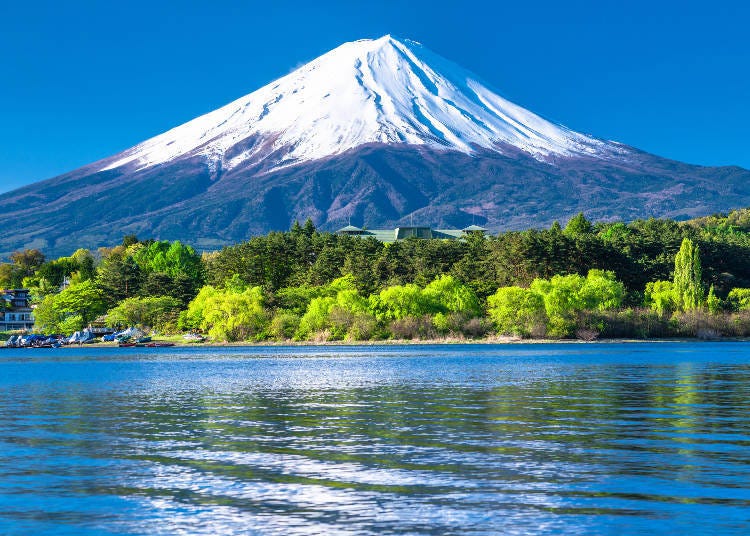
It would be a shame if you had day trips and hot springs outings planned just to have them canceled last minute. That’s where last-minute and same-day tours and activities come in!
There’s a wide range of one-day tours available for you to enjoy after the typhoon has passed. For tours departing from Tokyo, there’s the Fuji Classic Route Day Trip (from Shinjuku), Kamakura/Enoshima Day Trip (from Tokyo), and fruit-picking outings, such as strawberries in the spring and grapes in the fall.
Also, be sure to check out plans that provide you with the chance to partake in authentic Japanese experiences. Two examples include the “Tokyo Authentic Food Sample Making" and “Tokyo Glass Blowing Experience," both of which take place completely indoors.
If the weather is expected to improve, you may want to spend a night or two at a hot spring resort, which you can book online through sites such as Booking.com, which even allow last-minute reservations (as long as there are rooms available!)
If you're planning a visit to Japan, especially during the months of August or September, it's important to be aware of the possibility of encountering a typhoon.
To ensure you're prepared, it's advisable to familiarize yourself with various information resources, establish safety measures, and familiarize yourself with the protocols to follow in the event of flight delays or cancellations well in advance of your trip.
*Information in article as of July 2023. Please see official websites for the latest updates and information.
English translation by: Krys Suzuki
- Category
*Prices and options mentioned are subject to change.
*Unless stated otherwise, all prices include tax.
Limited time offer: 10% discount coupons available now!
Recommended places for you
-
Appealing

Rukku and Uohei
Izakaya
Sapporo / Chitose
-

Kamesushi Sohonten
Sushi
Umeda, Osaka Station, Kitashinchi
-
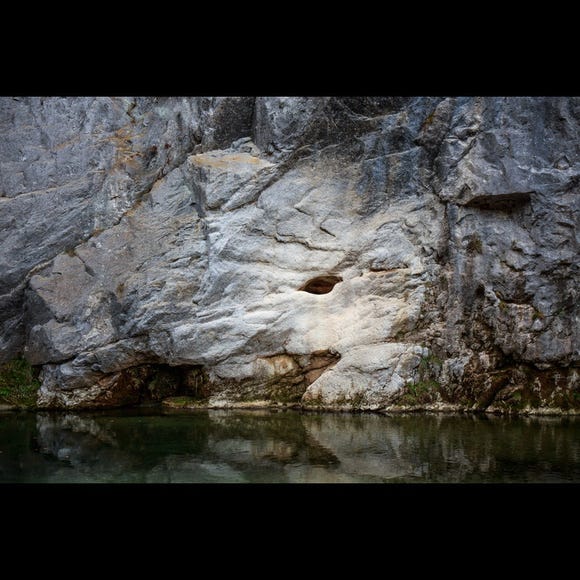
Geibi Gorge
Rivers, Lakes & Canyons
Morioka, Hiraizumi And Hachimantai
-
Goods

Yoshida Gennojo-Roho Kyoto Buddhist Altars
Gift Shops
Nijo Castle, Kyoto Imperial Palace
-

Jukuseiniku-to Namamottsuarera Nikubaru Italian Nikutaria Sannomiya
Izakaya
Kobe, Sannomiya, Kitano
-
Menu

ISHIDAYA Hanare
Yakiniku
Kobe, Sannomiya, Kitano
-

Step Into the Story: Inside Immersive Fort Tokyo
-

15 Must-Try Restaurants in Ikebukuro: From Aged Yakiniku to All-You-Can-Eat Sushi, Plus Adorable Animal Cafés
-

A Complete Guide to the JR West Kansai Area Pass
-

12 Unique & Fun Tokyo Food Tours to Enjoy in 2024
-

Everything You Need To Know About the Kyoto-Osaka Sightseeing Pass
-

The Complete Guide to the Kintetsu Rail Pass
-
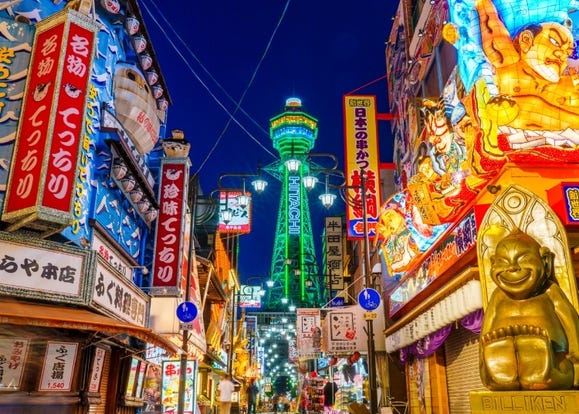
Visiting Osaka's Iconic Tsutenkaku Tower: Fun Activities & Area Guide
-

What's so Great About Kyoto Anyway? We Asked a Touring Brit What He Loves About the Area
-

Autumn Vibes in Aoyama: How Tokyoites Chill
-

Kamaishi Japan: Kamaishi Unosumai Recovery Stadium and Sightseeing Spots in Japan’s Rugby Town
-

10 Absolutely Adorable Animals in Hokkaido You May Encounter on a Lucky Day!
-

Akiu Onsen Adventure: ‘Terroage’ Will Redefine Tourism to Miyagi and Beyond
- #best sushi japan
- #what to do in odaiba
- #what to bring to japan
- #new years in tokyo
- #best ramen japan
- #what to buy in ameyoko
- #japanese nail trends
- #things to do japan
- #onsen tattoo friendly tokyo
- #daiso
- #best coffee japan
- #best japanese soft drinks
- #best yakiniku japan
- #japanese fashion culture
- #japanese convenience store snacks













